A couple of weeks ago the manager of a TrueNicks enrolled stallion called to tell us that a hypothetical mating had generated Dosage Figures that were all zeroes – zeroes for each category in the Dosage Profile; a Dosage Index of zero; and a Center of Distribution of zero.
A check confirmed that this was not an error, and nor was it the result of an obscure pedigree. The sire in question is a son of Candy Ride out of a Deputy Minister mare, and the dam is a daughter of Henny Hughes, the sire of the magnificent Beholder, and broodmare sire of Monomoy Girl, the Champion Three-Year-Old Filly elect of 2018. What, in fact, the result indicated is that Dosage itself is beginning to disappear from modern pedigrees.
In the coming months Dosage is also going to disappear from the pages of TrueNicks Reports, to be replaced by a coefficient that we believe is going to be far more useful in assessing a mating, and that also happens to be far nearer the original spirit of the Dosage concept.
It may come as something of a surprise to know that the history of Dosage goes back more than 100 years. In 1908 a retired French military officer, Lt. Col. J. J. Vuillier published a book titled Les Croisements Rationnels (Rational Crossbreeding). Vuillier was a frequent contributor to debates regarding thoroughbred pedigrees, and Dosage has its genesis in a study Vuillier conducted to resolve the question as the relative impact of two of the founding fathers of Eclipse and Herod. By conducting an in-depth study of the pedigrees of major European winners, Vuillier concluded that Herod had exerted the greater influence. More importantly, in the course of his research Vuillier noticed that the proportion of Herod in the pedigrees of the best horses remained relative constant over the generations.
Continuing research led Vuillier to the conclusion that a few key ancestors – which he christened chefs de race - predominated in the 12 generation pedigrees he researched, and that like Herod their representation in the population became relatively constant over time. His original series of horses, all born in the 1820s and 1830s consisted of the stallions Pantaloon, Voltaire, Touchstone, Bay Middleton, Birdcatcher, Gladiator and Melbourne, and the mare, Pocahontas. Subsequently, Vuillier added two more chefs from the mid 19th century, Newminster and Stockwell, and later a third series from the late 19th century consisting of Hermit, Hampton, Galopin, Isonomy, Bend Or and St. Simon.
To implement his Dosage system, Vuillier would score a 12 generation pedigree on the basis of there being 4,096 ancestors in the twelfth generation (although some ancestors will appear multiple times). To great his dosage score Vuillier assigned one point for an appearance in the twelfth generation, two points in the eleventh, all the way up to 2048 points for a parent.
To implement his system Vuillier would aim for a mating that brought the contribution score for the chefs de race in the pedigree of the foal as close in line as possible to the score for that chef in the general population. So, if a mare had a low representation of Stockwell, she should be mated with a stallion whose own proportion of Stockwell was on the higher side, bringing the foal back nearer the breed norm. The Vuillier Dosage system was used in practice the the program of the Aga Khan, when he began a racing and breeding operation shortly after WWI, and it’s even been suggested an updated version is utilized by the current Aga Khan.
It is somewhat interesting, and indeed relevant that the names that Vullier used in his calculations, would in fact be names that were found to be significant in a large study on Thoroughbreds earlier this year. In its study "Founder-specific inbreeding depression affects racing performance in Thoroughbred horses", Todd and colleagues discerned what individual horses had the largest effects on racing performance and found that inbreeding resulting from four ancestors had significant effects on racing performance. Individuals with more identical-by-descent alleles attributed to Herod had greater cumulative earnings, earnings per start, and career length. The authors noted that this does not mean that increased inbreeding to Herod has had no negative effects on his descendants, but that overall they exhibit less inbreeding depression than other, equally inbred individuals. Conversely, inbreeding to Eclipse, Stockwell, and Touchstone had negative effects on the racing performance of their descendants.

The authors further noted that Touchstone was reported by his contemporaries to have a number of conformational and behavioral issues, which might also have contributed to the reduced level of performance in his descendants. Although Eclipse was a superior racehorse, his grandsire suffered from exercise-induced pulmonary hemorrhage (bleeding from the lungs) and that Stockwell’s mother suffered from the congenital condition of laryngeal neuropathy (paralysis of the larynx), which may partly explain the observed reduction in performance.
It is interesting to note that many of the stallions that Vullier noted and included in his list of calculations have now in fact been scientifically shown to have influenced the outcome of their descendants beyond the norm. One thing that the Vuillier Dosage system did not attempt to do was to consider the potential aptitude of the result of a mating. That, however, was the goal of the Varola Dosage system, the result of work by the Italian lawyer Dr. Franco Varola. Although both Vuillier and Varola used the designation “Dosage” the only real shared characteristics of their work was the idea that the breed could be defined by a relatively small group of common ancestors, and the description of those ancestors as chefs.
Varola’s chefs were horses that he though transmitted a distinct influence, summarized by five categories – Brilliant-Intermediate-Classic-Solid-Professional. He did not consider generational distance, and merely gave a point for each occurrence of a chef in the pedigree. Horse’s only became chefs if the exerted an influence different than their nearest chef predecessor, which lead to some outstanding sires not being categorized, where some far inferior stallions were. The result of applying the categorization of the chefs was a Dosage Profile, which was designed to give insight into the potential aptitude. Mathematical calculations involving the number of ancestors in each category resulted in a Dosage Index and a Center of Distribution score. Although he was considering different factors than Vuilier, their central goal in a mating was essential the same, to achieve balance: for Vuillier a balance of ancestral contribution, and for Varola a balance of aptitidual contribution.
Varola’s work was popularized in two books, Typology Of The Race Horse and The Functional Development Of The Thoroughbred, and through articles in the long-defunct magazine, The British Racehorse. North American students of breeding were familiarized with Dosage concepts through the writings of the Leon Rasmussen, bloodstock editor of the Daily Racing Form. It was also North America that saw the most recent evolution of Dosage. Inspired by Rasmussen’s column, Dr Steven Roman tweaked Varola’s work, utilizing a four generation pedigree, and a similar adjustment for generational distance to Vuillier. And, whereas Varola had explicitly wanted to avoid predictions of optimum distance – he had deliberately arrange his aptitudinal types, already given names with sociological overtones – across what her perceived as a left to right political spectrum, Roman made distance prediction his goal. The initial Roman Dosage chefs and their placements in the aptitudinal groups were retro-classified so that every Kentucky Derby winner from 1929 – the first year calculated – up until the launch of the Roman Dosage in the early 1980s would have an Dosage Index of less than 4.0. This led to the popularity of the Roman Dosage for assessing Kentucky Derby prospects as young horses, particularly the “dual qualifier” – a horse who was rated within 10 lbs of the highweight on the Experimental Free Handicap, the year-end rating for two-year-olds, and a Dosage Index of less than 4.00. The 1991 Kentucky Derby victory of Strike the Gold – who initially had a DI of 9.00 – caused a reclassifying of Raise a Native to get his Roman Dosage under 4.0 – but the victories of such 4.0 DI rated runners as Real Quiet, Charismatic, Giacomo, Mind That Bird, American Pharoah and Nyquist demonstrated the Roman Dosage had failed to keep up with the evolution of the North American thoroughbred.
As the horses used in Varola’s Dosage have long since exited “stage right” – that is as time has passed since Varola created a chef list his chefs have receded deep into the pedigree – and because there was a popular demand for Dosage figures, the Jockey Club and thence TrueNicks reports have carried Roman’s Dosage figures. With the retirement of Dr. Roman, modern pedigrees are fast heading in the direction of the Varola Dosage, hence hypothetical matings – like the one we mentioned at the beginning of this article – that have no chefs in the first four generations, and subsequently fail to generate a Dosage Score. The number of pedigrees with no chefs or too few chefs to generate a useful score will inevitably increase over the next few years and so it is time to move on to a metric with more scientific rigor which we will move to in the new year.








